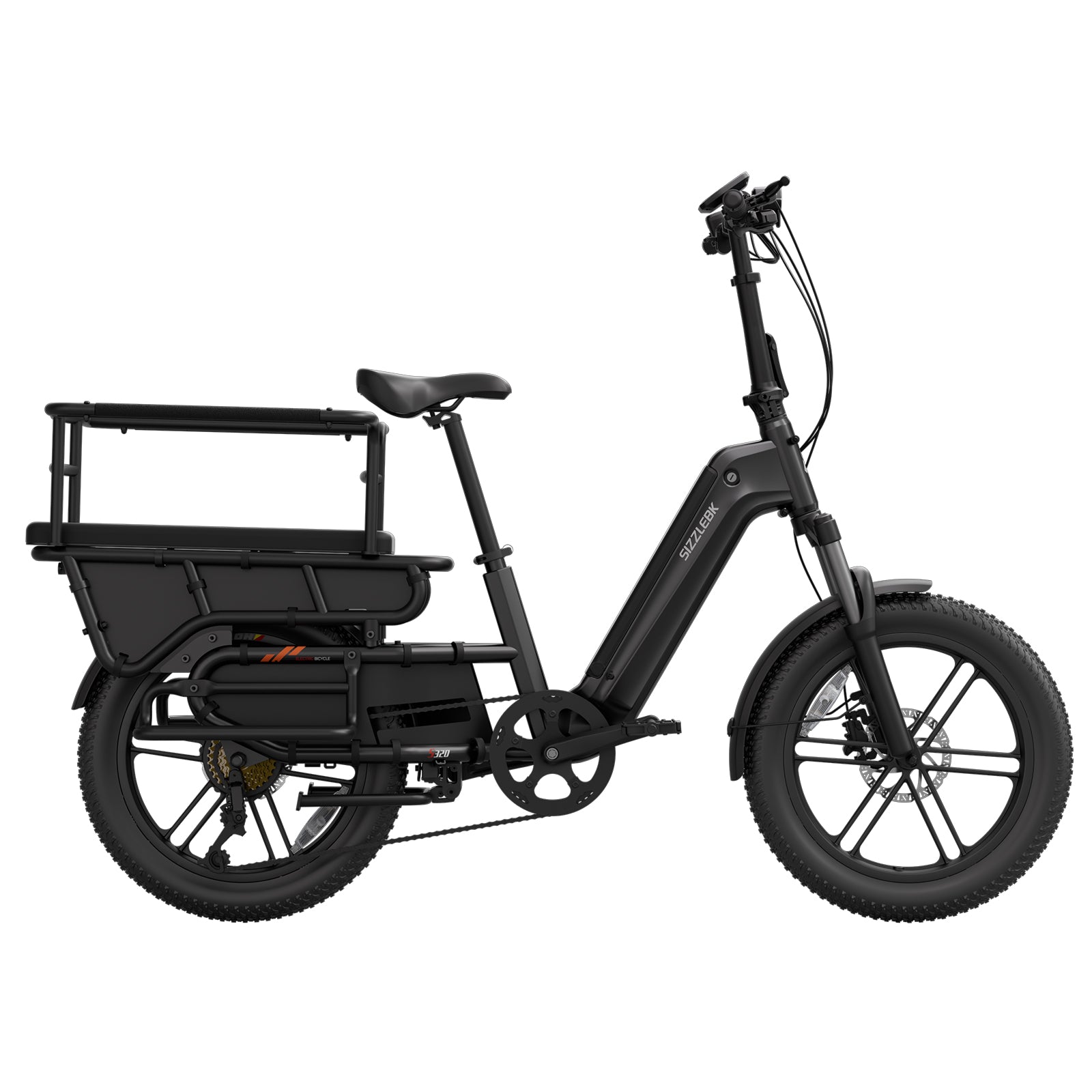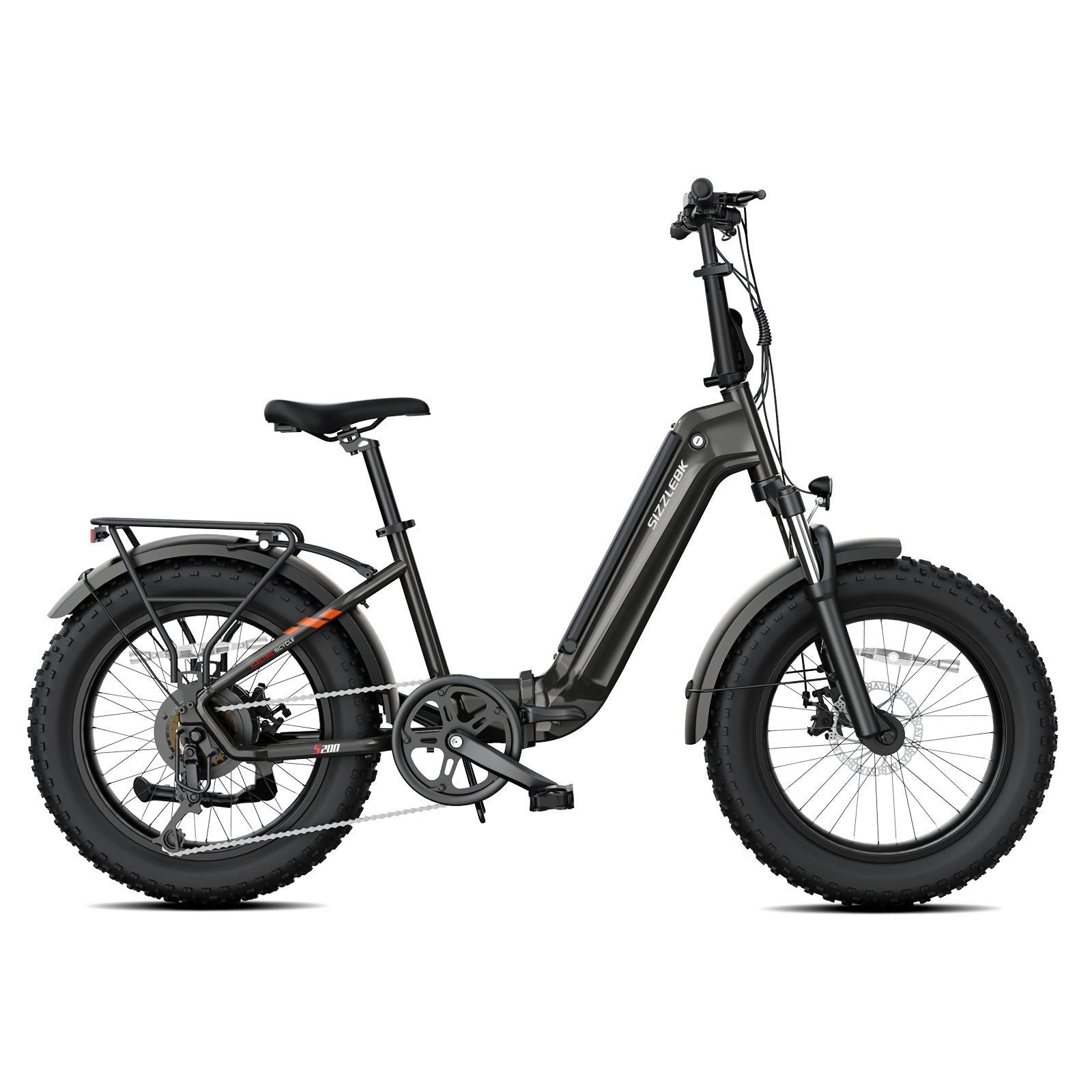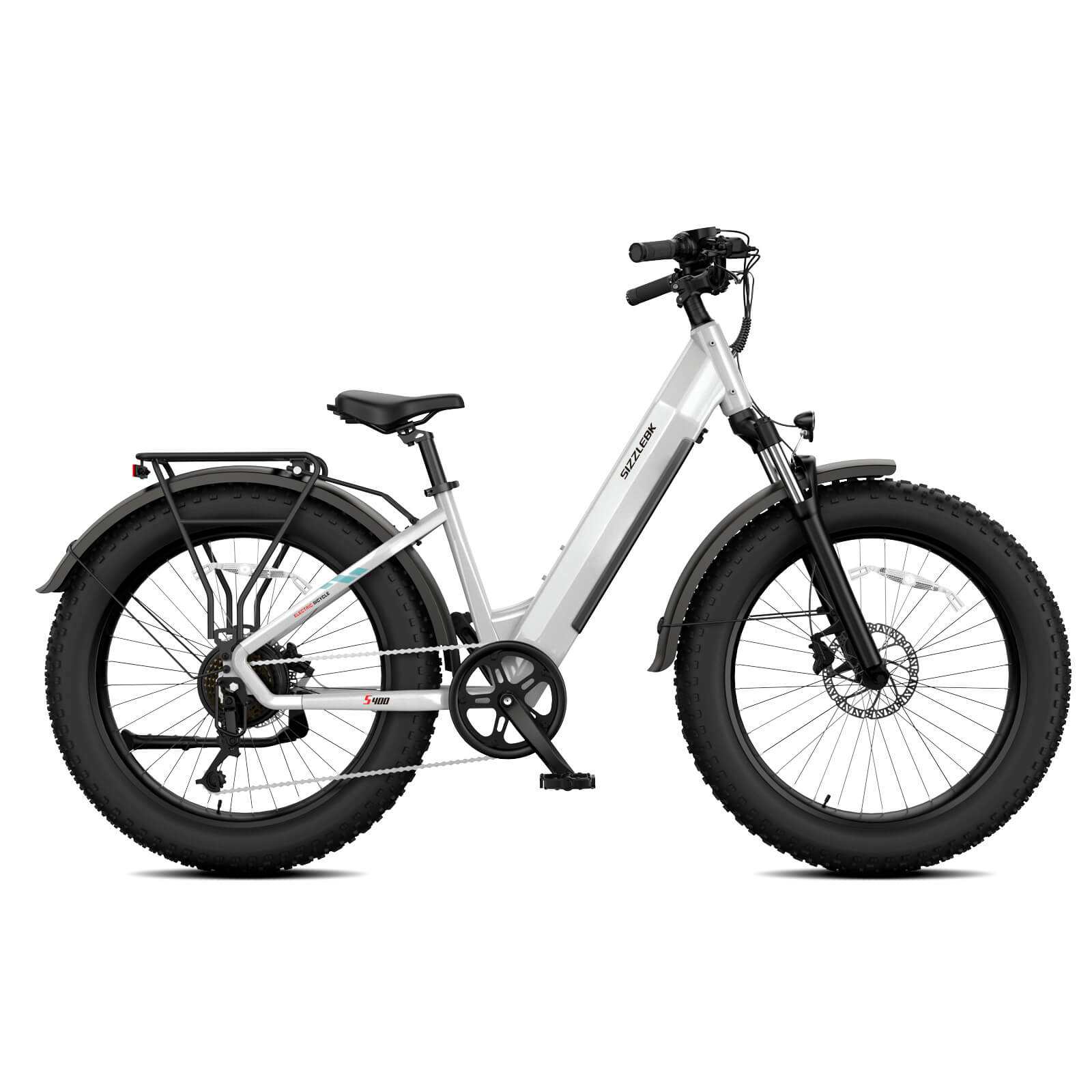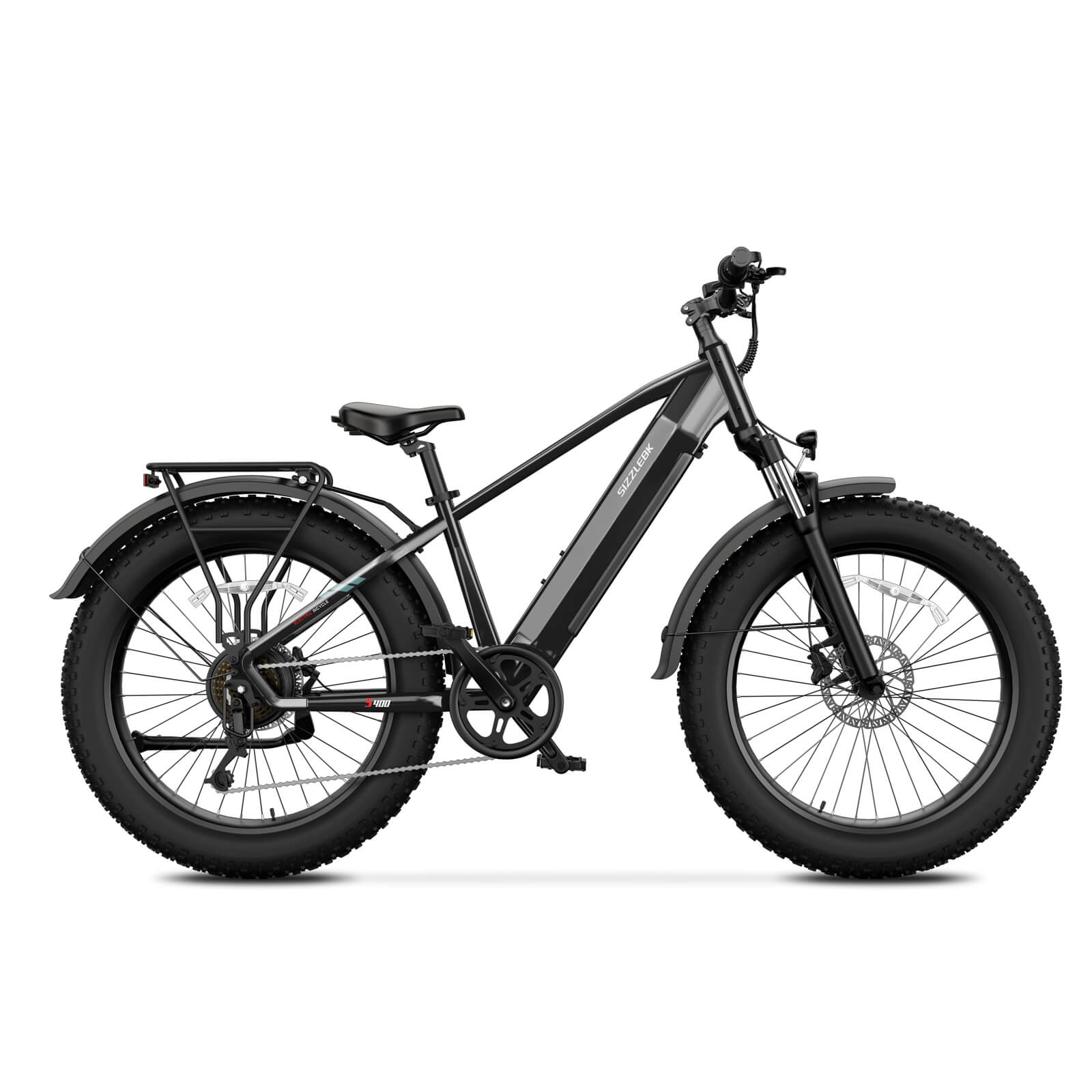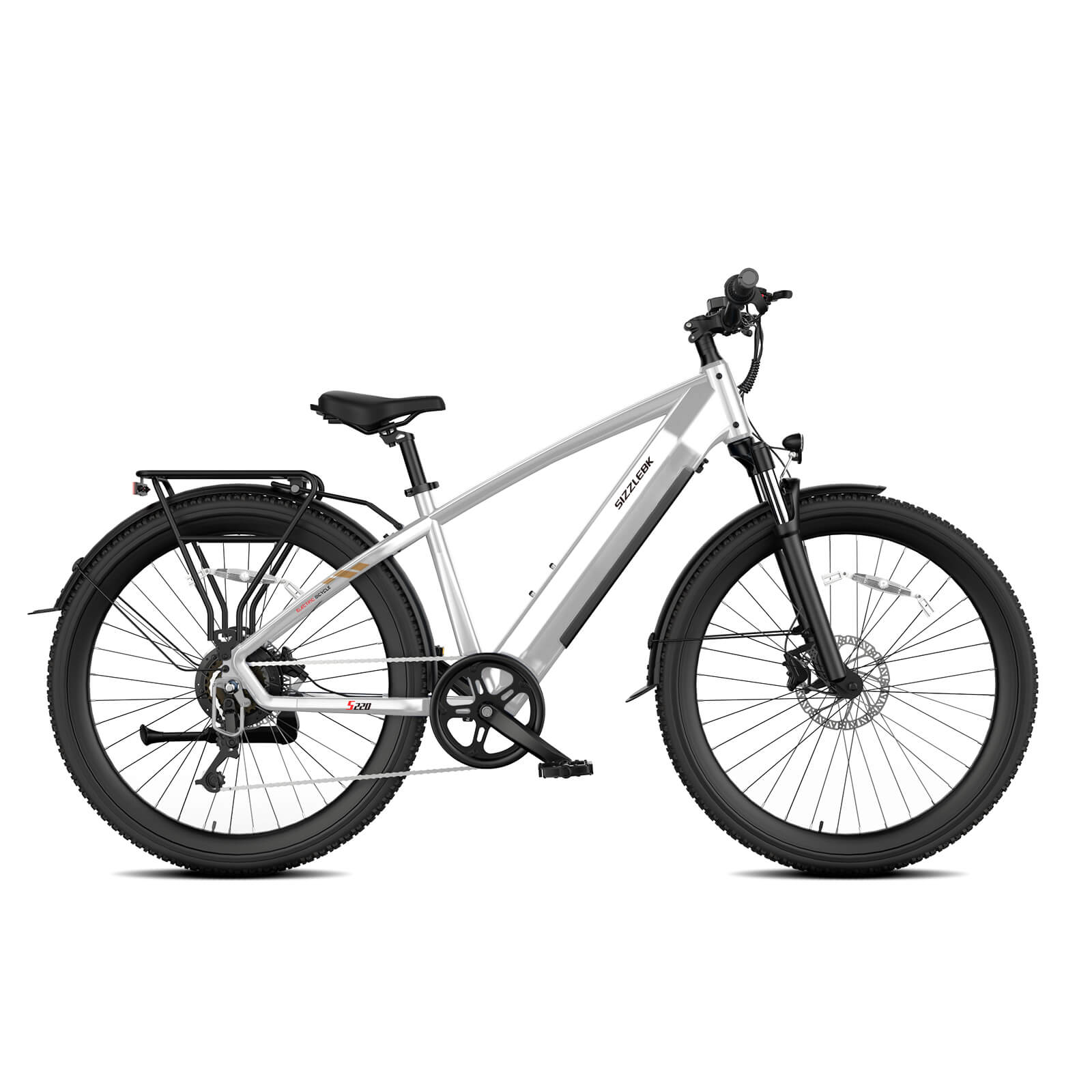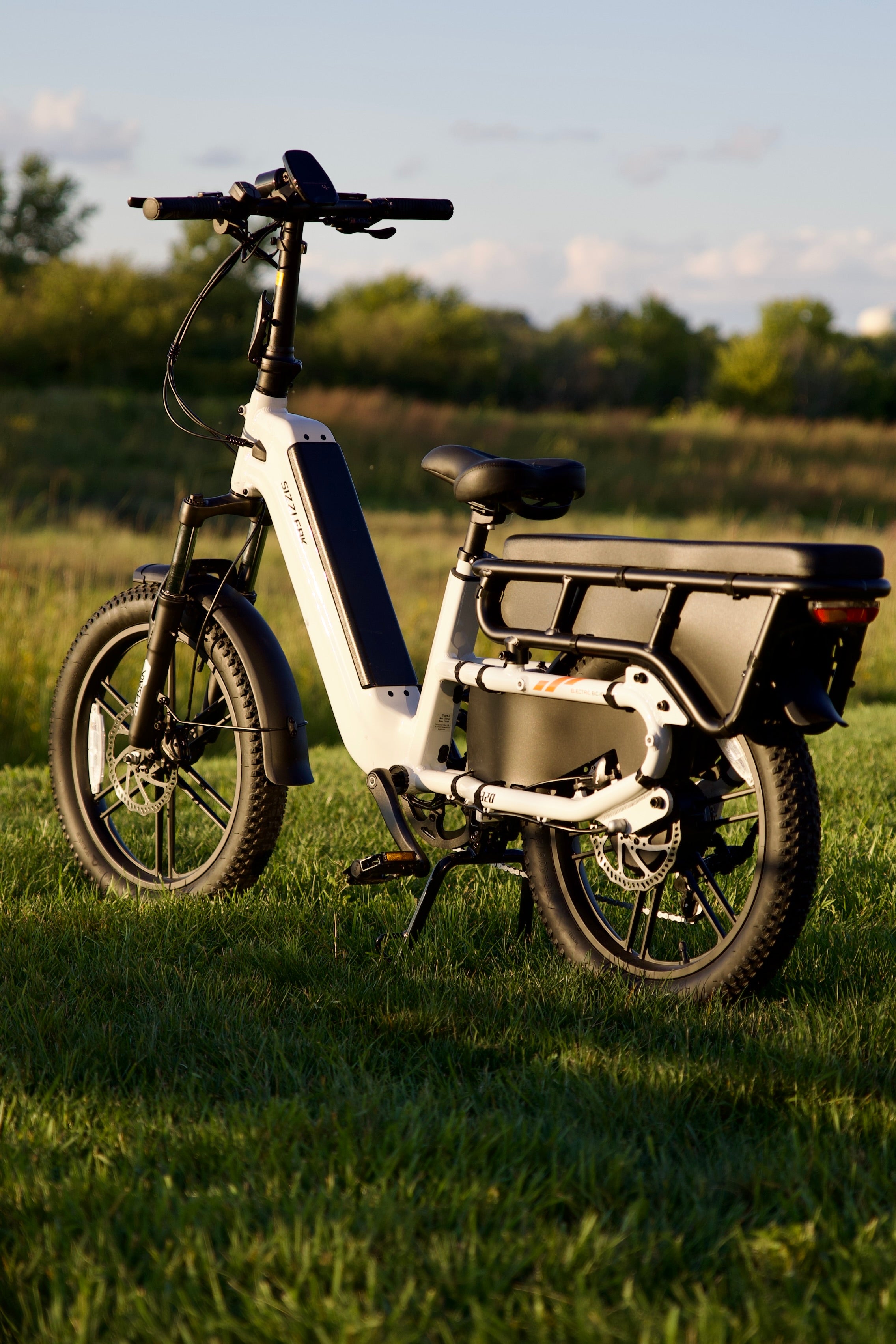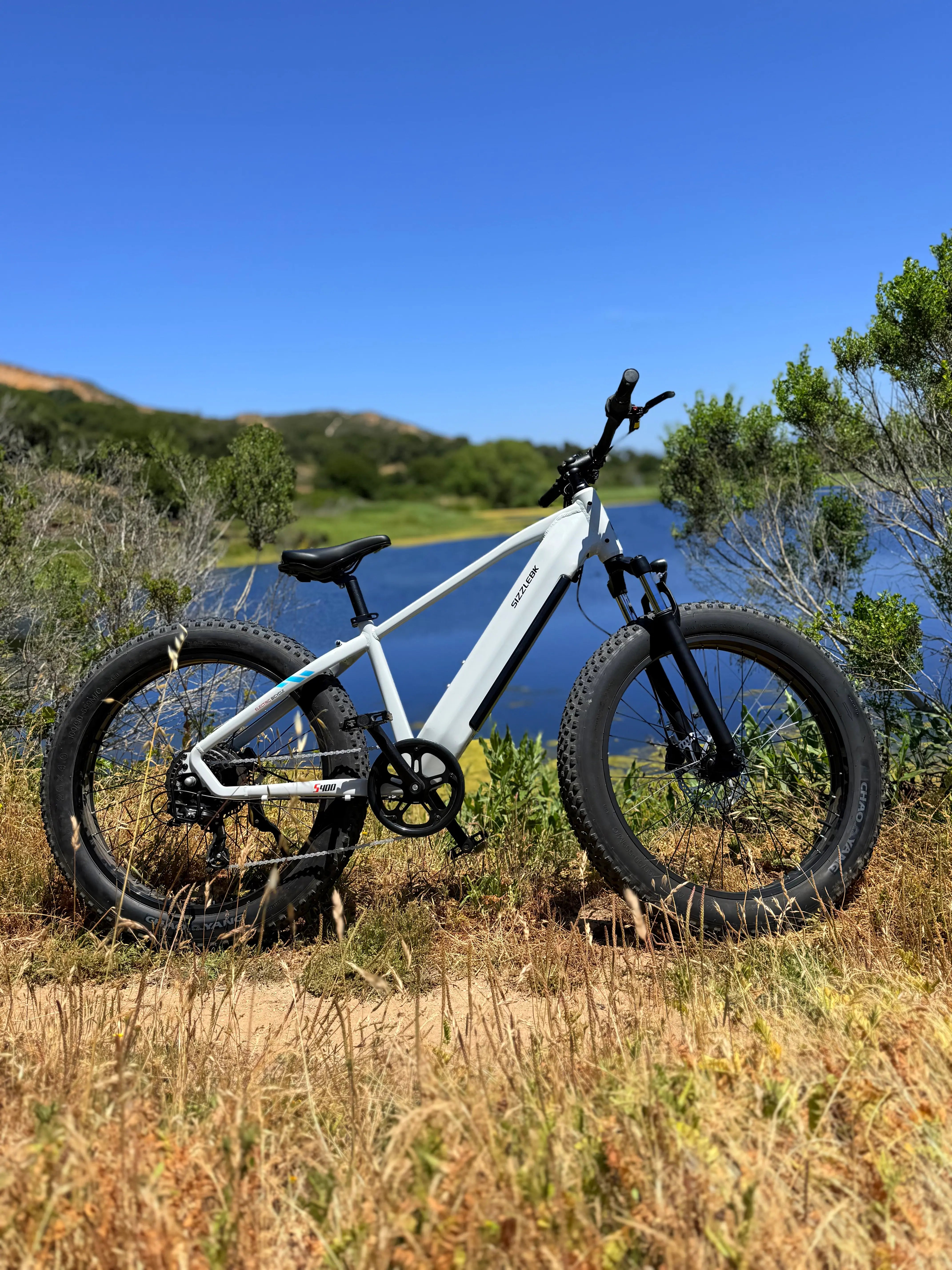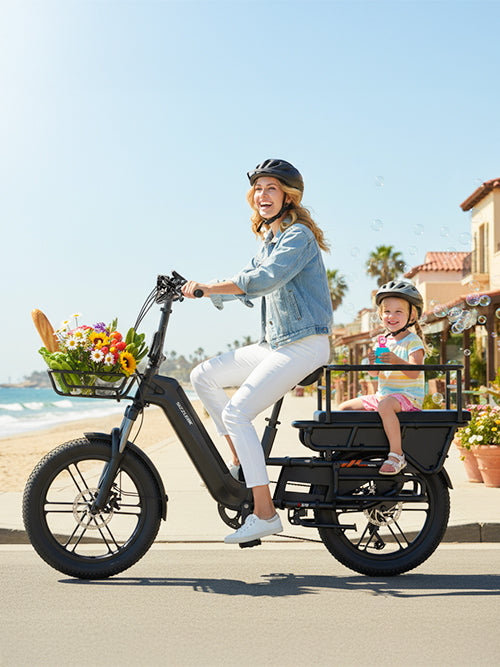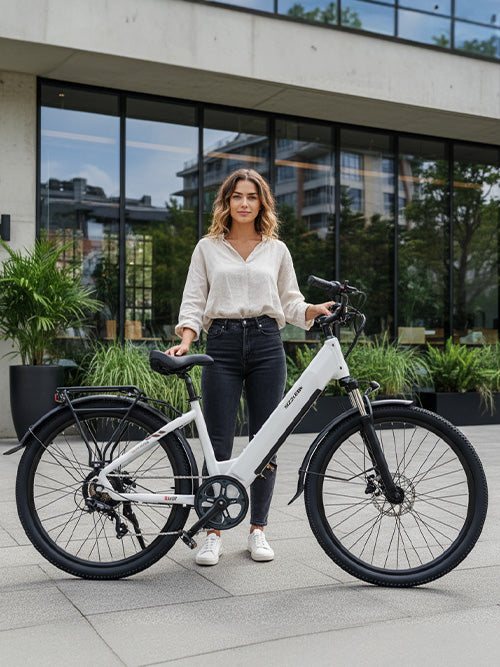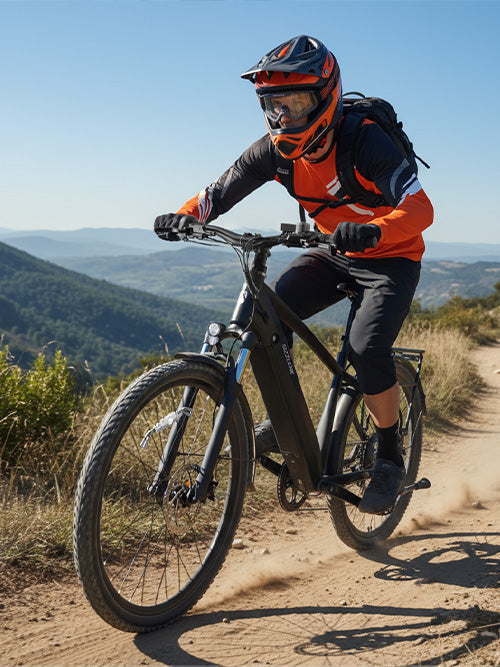Urban delivery is undergoing a transformation, and at the forefront of this change are cargo e-bikes. These efficient, eco-friendly vehicles are becoming a vital component in the logistics networks of many cities. As we explore the future of urban delivery, it's clear that cargo e-bikes, also known as e cargo bikes or cargo electric bikes, offer a sustainable solution to many of the challenges faced by urban centers today.
Amidst the hustle and bustle of city life, the need for innovative delivery solutions has never been more pressing. Congested roads and environmental concerns are prompting cities to rethink their transportation strategies. Cargo e-bikes are emerging as a game changer in this context, providing a blend of efficiency, sustainability, and practicality that traditional vehicles simply can't match. By integrating cargo e-bikes into their logistics frameworks, businesses are not only reducing their carbon footprints but also improving delivery times and customer satisfaction.
The Rise of Cargo E-Bikes
Cities worldwide are experiencing rapid growth, leading to increased traffic congestion and pollution. Traditional delivery vehicles contribute to these problems, often struggling to navigate crowded streets and emitting harmful pollutants. Enter cargo e-bikes: an innovative solution that combines the efficiency of bicycles with the power of electric motors.
The adoption of cargo e-bikes is gaining momentum as cities become more aware of their potential benefits. With urban populations swelling, the pressure on existing infrastructure is immense, making the maneuverability and compact design of cargo e-bikes an attractive proposition. These bikes can easily weave through traffic, reducing delivery times and increasing efficiency. Moreover, they offer a versatile platform that can be adapted to meet the diverse needs of businesses, from transporting perishable goods to delivering bulky items.
Environmental Benefits
The environmental benefits of cargo e-bikes are significant. Unlike gas-powered vehicles, they produce zero emissions, reducing the carbon footprint of deliveries. Additionally, they help decrease noise pollution, creating a quieter urban environment. By opting for cargo e-bikes, companies can align with sustainability goals and contribute to a greener planet.
In an era where climate change is a critical concern, the shift towards eco-friendly transportation solutions is more urgent than ever. Cargo e-bikes offer a tangible way for companies to demonstrate their commitment to sustainability. By integrating these bikes into their delivery fleets, businesses can significantly reduce their reliance on fossil fuels and contribute to cleaner air in urban areas. This move not only aligns with global environmental goals but also enhances corporate social responsibility profiles, appealing to environmentally conscious consumers.
Cost-Effectiveness
From a financial perspective, cargo e-bikes are an attractive option. They have lower operating costs compared to traditional delivery vehicles, requiring less maintenance and no fuel expenses. Moreover, they can reduce delivery times by avoiding traffic congestion, enhancing overall efficiency and customer satisfaction.
The economic advantages of cargo e-bikes extend beyond just operational savings. As cities impose stricter regulations on emissions and congestion charges, businesses using cargo e-bikes can avoid these additional costs. Additionally, the potential for increased delivery frequency and reliability can lead to improved customer retention and satisfaction. For startups and small businesses, the lower initial investment and operating costs associated with cargo e-bikes can make them a feasible entry point into the competitive delivery market.
How Cargo E-Bikes Work
Cargo e-bikes are equipped with electric motors that assist riders, especially when carrying heavy loads. The motor provides a boost, making it easier to pedal uphill or cover long distances. These bikes typically feature spacious cargo areas, which can be customized to suit different delivery needs.
The integration of technology in cargo e-bikes enhances their functionality, making them suitable for a range of urban delivery scenarios. The electric assist system not only aids in carrying heavier loads but also helps in maintaining a consistent speed, regardless of the terrain. This capability ensures that deliveries are not only faster but also more predictable, a crucial factor in maintaining customer satisfaction. Moreover, the customizable cargo areas allow businesses to tailor the bikes to their specific needs, whether it's installing temperature-controlled compartments for food delivery or secure containers for valuable goods.
Key Features
- Electric Assist: The motorized assistance is the hallmark of cargo e-bikes, allowing for easier transportation of goods without exhausting the rider.The electric assist feature transforms the traditional biking experience, making it accessible to a broader range of users. Whether navigating hilly terrain or covering long distances, the motor helps maintain momentum, reducing physical strain on the rider. This feature is especially beneficial for delivery personnel who need to complete multiple deliveries in a day, ensuring they remain efficient and comfortable throughout their shifts.
- Large Cargo Capacity: Unlike regular bikes, e cargo bikes are built with large storage compartments that can hold a significant volume of items.The design of cargo e-bikes prioritizes space and accessibility, offering various configurations to accommodate different types of cargo. From groceries and parcels to furniture and construction materials, these bikes can handle diverse delivery requirements. This adaptability makes them a versatile choice for businesses looking to streamline their urban logistics operations.
- Durability: Designed to withstand the rigors of urban delivery, these bikes are robust and built to last.Built with strong materials and reinforced frames, cargo e-bikes are engineered to endure the demands of daily delivery operations. This durability translates to fewer repairs and replacements, further enhancing their cost-effectiveness. Additionally, their robust design ensures that they can safely transport heavy and delicate items, minimizing the risk of damage.
- Maneuverability: Their compact design allows them to navigate through narrow streets and crowded areas with ease.The compact and agile nature of cargo e-bikes makes them ideal for urban environments where space is often limited. They can easily navigate through congested streets, access pedestrian zones, and even use bike paths, providing unparalleled flexibility compared to larger vehicles. This maneuverability not only speeds up delivery times but also reduces the stress and frustration commonly associated with urban driving.
Real-World Applications
The versatility of cargo electric bikes makes them suitable for various delivery scenarios.
Last-Mile Delivery
One of the most significant applications of cargo e-bikes is in last-mile delivery. This term refers to the final leg of a product's journey to the customer, often the most challenging and costly part of the delivery process. Cargo e-bikes can efficiently handle these deliveries, ensuring packages reach their destinations quickly and safely.
In the context of last-mile delivery, cargo e-bikes offer a solution to the logistical challenges that arise in densely populated areas. Their ability to bypass traffic and access locations that are difficult to reach by car makes them an invaluable asset for businesses. By utilizing cargo e-bikes, companies can not only expedite the delivery process but also reduce the cost associated with traditional last-mile delivery methods, such as fuel expenses and vehicle maintenance.
E-Commerce and Retail
Many e-commerce and retail companies are adopting cargo e-bikes to improve delivery efficiency. By using these bikes, businesses can offer same-day delivery services, enhancing the customer experience and gaining a competitive edge.
For e-commerce giants and local retailers alike, cargo e-bikes represent an opportunity to enhance their delivery services and differentiate themselves in a crowded market. The ability to offer rapid, reliable delivery can significantly boost customer satisfaction and loyalty. Moreover, as consumer expectations continue to rise, cargo e-bikes provide a scalable and sustainable solution that can adapt to increasing demand without compromising service quality.
Food and Grocery Delivery
The food and grocery delivery sectors are also benefiting from cargo e-bikes. Restaurants and supermarkets can deliver fresh produce and meals directly to customers' doorsteps without contributing to traffic congestion or pollution.
With the growing popularity of online food and grocery shopping, the demand for efficient delivery solutions is skyrocketing. Cargo e-bikes offer a perfect fit for these industries, ensuring that perishable items are delivered promptly and in optimal condition. Their ability to navigate urban landscapes quickly means that businesses can maintain the freshness and quality of their products, a key factor in customer satisfaction.
Challenges and Solutions
While cargo e-bikes offer numerous advantages, there are challenges to consider.
Infrastructure
The success of cargo e-bikes depends on adequate infrastructure. Cities need to invest in bike lanes and secure parking areas to accommodate these vehicles. Fortunately, many urban areas are recognizing this need and are implementing changes to support cycling infrastructure.
Developing a robust infrastructure for cargo e-bikes requires collaboration between city planners, policymakers, and businesses. Dedicated bike lanes, secure storage facilities, and charging stations are essential components of a supportive environment for cargo e-bikes. By prioritizing these investments, cities can facilitate the integration of e-bikes into their transportation networks, paving the way for a more sustainable urban future.
Weather Conditions
Weather can impact the efficiency of cargo e-bikes. Rain, snow, or extreme heat can pose challenges for riders. However, advancements in bike design, such as weatherproofing and improved safety features, are helping to mitigate these issues.
To combat the challenges posed by adverse weather conditions, manufacturers are developing innovative solutions to enhance the resilience and safety of cargo e-bikes. Features like all-weather tires, enhanced lighting systems, and protective coverings can improve performance in various weather scenarios. Additionally, rider training programs can equip delivery personnel with the skills and knowledge needed to operate safely in challenging conditions.
Security
Given the value of the cargo, security is a concern. Companies are investing in robust locking systems and GPS tracking to protect their deliveries and equipment.
To address security concerns, businesses are employing advanced technologies to safeguard their cargo and equipment. GPS tracking enables real-time monitoring of deliveries, ensuring accountability and reducing the risk of theft. Additionally, robust locking mechanisms and secure storage compartments provide an added layer of protection, giving businesses and customers peace of mind.
The Future of Cargo E-Bikes
The future of cargo e-bikes looks promising. As technology advances, these bikes will become even more efficient and accessible. Innovations such as improved battery life and enhanced load capacity will further cement their role in urban delivery networks.
The continuous evolution of cargo e-bike technology promises to expand their capabilities and applications. As battery technology improves, the range and efficiency of these bikes will increase, allowing for longer and more demanding delivery routes. Additionally, advancements in materials and design will further enhance their load capacity, enabling them to handle a wider variety of goods and services.
Policy and Regulation
Government policies and regulations will play a crucial role in the adoption of cargo e-bikes. Supportive measures, such as subsidies for electric vehicles and investment in cycling infrastructure, will encourage more businesses to transition to this sustainable delivery method.
The role of government policy cannot be understated in the widespread adoption of cargo e-bikes. By offering incentives such as tax breaks and subsidies, policymakers can encourage businesses to invest in this sustainable technology. Furthermore, regulations that favor electric and zero-emission vehicles can drive the transition towards cleaner urban transportation solutions, benefiting both the environment and the economy.
Technological Advancements
The integration of smart technology in cargo e-bikes is on the horizon. Features such as real-time traffic updates, route optimization, and autonomous delivery capabilities are being explored to enhance efficiency and convenience.
The future of cargo e-bikes is set to be revolutionized by the integration of cutting-edge technologies. Smart systems that provide real-time traffic data and route optimization can significantly enhance delivery efficiency, reducing delays and improving customer satisfaction. Additionally, the exploration of autonomous delivery capabilities holds the potential to transform the logistics industry, offering unprecedented levels of efficiency and convenience.
Conclusion
Cargo e-bikes represent a revolutionary shift in urban delivery. Their ability to navigate congested streets, reduce environmental impact, and lower costs makes them an ideal solution for modern cities. As urban areas continue to grow, the adoption of cargo electric bikes will likely increase, paving the way for a cleaner, more efficient delivery ecosystem. Businesses and policymakers alike should embrace this innovative technology to ensure sustainable urban development.
By choosing cargo e-bikes, we are not just enhancing delivery efficiency, but also taking a significant step towards a more sustainable future. The transition to cargo e-bikes offers a unique opportunity to address some of the most pressing challenges facing urban centers today. As stakeholders work together to overcome barriers and maximize the potential of this technology, the vision of a cleaner, quieter, and more efficient urban environment becomes increasingly attainable. The future of urban delivery is electric, and cargo e-bikes are leading the charge.
FAQs
1. Are cargo bikes hard to ride?
Cargo bikes, especially electric cargo bikes, are designed for easy handling. Thanks to electric assist and balanced frames, riding a cargo e-bike feels natural—even when carrying kids, groceries, or gear.
2. What is the difference between a cargo e-bike and a regular e-bike?
The main difference is in capacity. A regular electric bike is built for individual riders, while a cargo e-bike is specially designed to carry extra passengers or heavy loads, making it ideal for families or businesses.
3. Can an adult ride in a cargo bike?
Yes, many cargo e-bikes are strong enough to carry adult passengers. Models with reinforced rear seats or benches can safely transport adults within the bike’s weight capacity, perfect for family outings or errands.
4. Are cargo e-bikes safe?
Electric cargo bikes are built for safety. They feature durable frames, powerful brakes, and often wider tires for stability. Many models include built-in lights, reflectors, and optional passenger seatbelts for added protection.
5. Why are cargo e-bikes so expensive?
Cargo e-bikes cost more because they’re engineered to handle heavy loads, come with powerful motors, and larger batteries for extended range. You’re paying for durability, performance, and the ability to replace car trips—making them a smart long-term investment.
